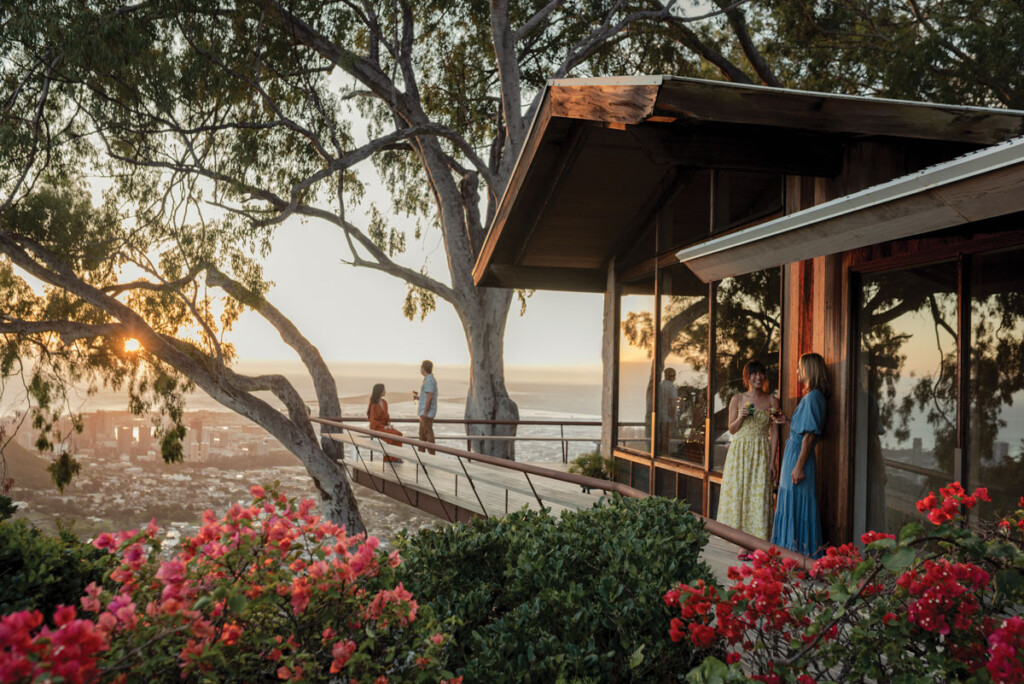The
day after New Year’s should’ve been busy for the Honolulu Zoo, offering some welcome
relief after the typically slow fall months. Zoo director Ken Redman anticipated
about 2,000 people on Jan. 2. Only 160 showed up, thanks to the unusually heavy
rains that drenched Honolulu-and most of Hawai’i-during the holiday season.“A
good portion of the zoo was flooded that day, and we even went half-price with
admissions,” Redman says. “There was much less business than we’d expected so
there was a huge impact on revenues.” The holidays were also a washout
for many businesses. On much of O’ahu, well over a month’s worth of rain fell
in just a week. A Dec. 7 downpour stuck areas such as Moanalua and Mililani with
more than 8 inches of rain, closing roads, flooding homes and causing power outages.
A few weeks later, many areas got more of the same. From Dec. 27 to Jan. 4, downtown
Honolulu saw more than 8 inches of rain, Hawai’i Kai got more than 9 inches and
Kailua saw close to 14 inches.  | Honolulu
Country Club’s golf course during the holiday season. Photo:
Stirling Morita, Honolulu Star-Bulletin |
Some
news stories seemed to focus on the bright side of the craptacular weather. “Rain
restores lush scenery,” announced a Jan. 5 headline from The Honolulu Advertiser.
Weather conditions had turned even the driest landscapes into real-life travel
brochures-verdant mountainsides, gushing waterfalls and all. The rains also eased
some concerns over drought conditions and even helped made this New Year’s one
of the safest yet. But many businesses, namely those who cater to tourists,
weren’t celebrating. With a strong winter tourist season just kicking off, these
businesses had hoped to cash in. Instead, many wound up bailing water, re-landscaping
and counting their losses. “I’ve heard from Waikïkï businesses that they
definitely saw lower revenues because of the heavy rains,” says Rick Egged, executive
director of Waikïkï Improvement Association. “We rely a lot on pedestrian traffic,
and when the weather’s bad, people aren’t out.” The outdoor dining section
of Tiki’s Grill & Bar usually offers a great view of Waikïkï Beach and Kaläkaua
Avenue. The weekend after New Year’s, the restaurant had to close off that area,
or about a third of its seats, says general manager Bill Tobin. Other
visitor-dependent businesses didn’t fare much better. Atlantis Adventures canceled
two day of submarine tours, due to rough seas. Farther east, the Kähala Mandarin
Oriental closed its popular Cabanas Seaside Grill. Few businesses had it
rougher than O’ahu’s golf courses. Rains transformed the links at the Honolulu
Country Club into a virtual archipelago. In Kailua, Luana Hills shut down for
about eight days in December, says director of golf Darin Sumimoto. He
says, “The course is designed for drainage, so there wasn’t any damage. But we
usually get about 100 golfers a day, so this was huge for us.” A round of golf
at Luana costs $120 for visitors and $49 for kama’äina. As we went to press,
Greg Nichols, general manager at the Ko Olina Golf Club, says his staff was still
getting the course back to normal. “A lot of the bunkers got washed out, so we
had to replenish the sand, and there were areas where we couldn’t cut grass for
a while, so it was really maintenance-heavy,” Nichols says. “None of the golf
courses got spared. FEB.
HEADS UP! Valentine’s
Day, Feb. 14, falls on a Saturday this year. If you haven’t already, make
those dinner reservations—pronto. February
is National Snack Food Month, coinciding with all the artery-clogging opportunities
that await: Super Bowl Sunday on Feb. 1, Punahou Carnival on Feb. 6 & 7, NFL
Pro Bowl on Feb. 8, Sacred Hearts Academy’s Superfair on Feb. 20 & 21
and Mardi Gras on Feb. 24. Don’t
get too carried away. February is also American Heart Month. The
20th annual Great Aloha Run takes place on President’s Day, Feb. 16. Watch
out for traffic between Aloha Tower and Aloha Stadium that day. Feb.
22 is Muharram, the start of the Islamic new year: 1424. 2004
is a Leap Year, so there is a Feb. 29. It actually takes the Earth 365.242 days
to orbit the sun, so the extra day every four years keeps the calendar in sync.
To get even more exact, every year divisible by 100 is not a leap year, unless
it is also divisible by 400. |
|











